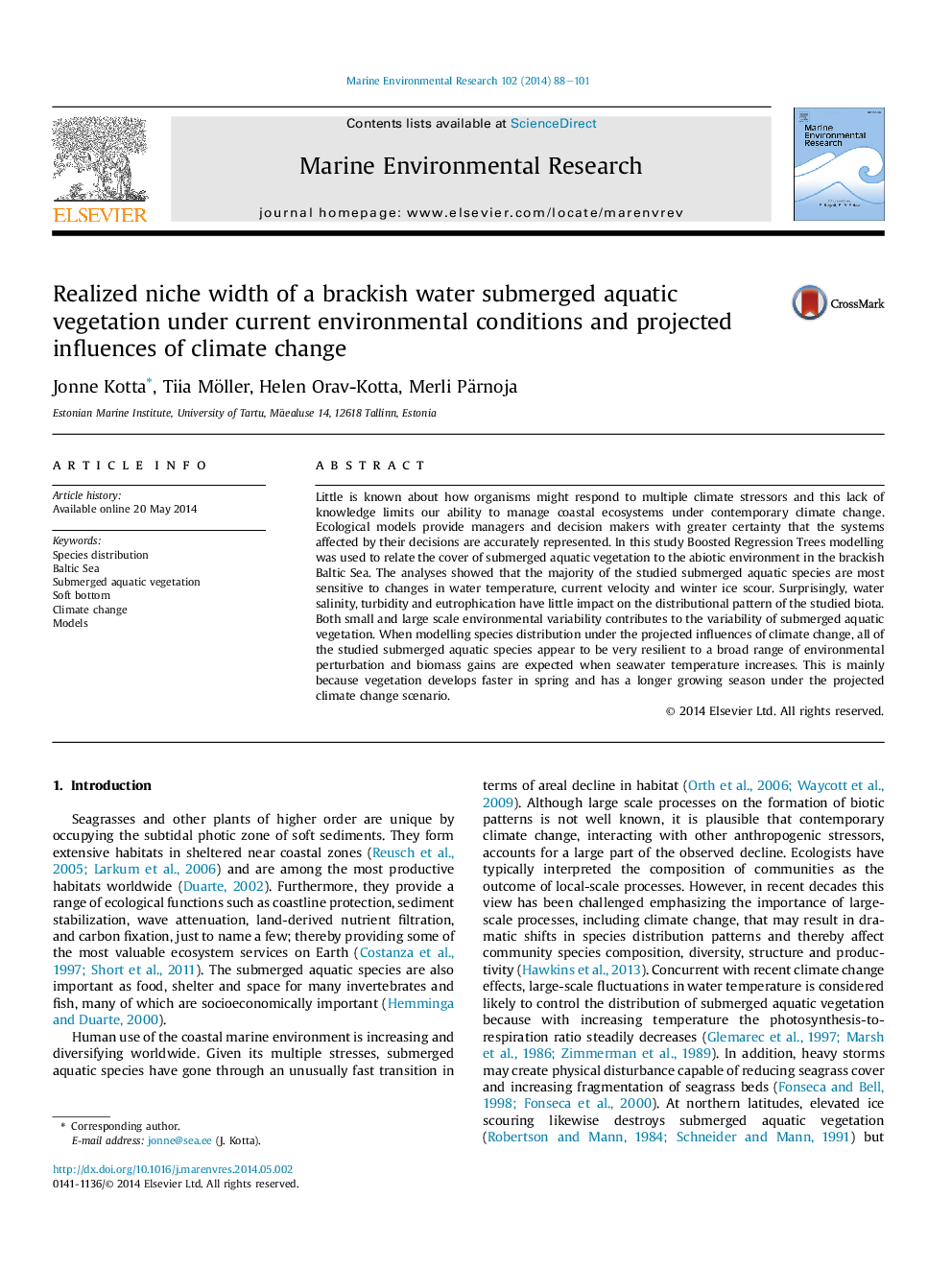| Article ID | Journal | Published Year | Pages | File Type |
|---|---|---|---|---|
| 6387780 | Marine Environmental Research | 2014 | 14 Pages |
â¢There exists a large overlap in niche space among the higher plant species.â¢Water temperature, current velocity and ice scour are the key predictors.â¢Both small and large scale environmental variability is important in the models.â¢Higher plants benefit from future climate, mainly due to a longer growth period.
Little is known about how organisms might respond to multiple climate stressors and this lack of knowledge limits our ability to manage coastal ecosystems under contemporary climate change. Ecological models provide managers and decision makers with greater certainty that the systems affected by their decisions are accurately represented. In this study Boosted Regression Trees modelling was used to relate the cover of submerged aquatic vegetation to the abiotic environment in the brackish Baltic Sea. The analyses showed that the majority of the studied submerged aquatic species are most sensitive to changes in water temperature, current velocity and winter ice scour. Surprisingly, water salinity, turbidity and eutrophication have little impact on the distributional pattern of the studied biota. Both small and large scale environmental variability contributes to the variability of submerged aquatic vegetation. When modelling species distribution under the projected influences of climate change, all of the studied submerged aquatic species appear to be very resilient to a broad range of environmental perturbation and biomass gains are expected when seawater temperature increases. This is mainly because vegetation develops faster in spring and has a longer growing season under the projected climate change scenario.
